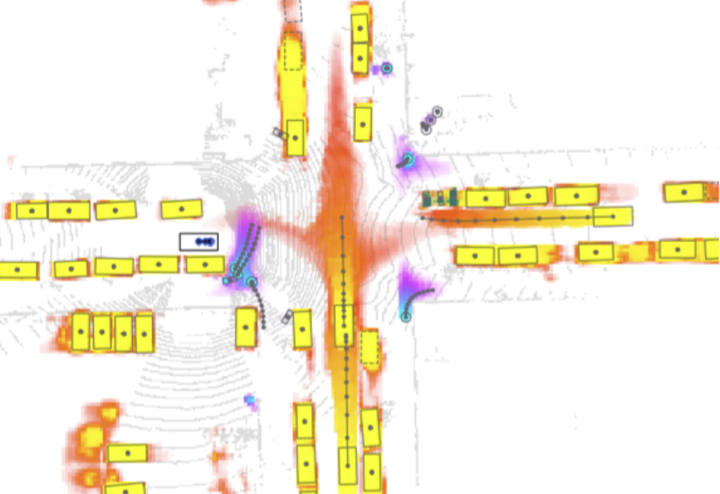 Left: a localization error makes the SDV follow a wrong route when using an HD map, driving into traffic.
Left: a localization error makes the SDV follow a wrong route when using an HD map, driving into traffic.Right: mapless driving can interpret the scene from sensors and achieve a safe plan that follows a high-level command.
Abstract
High-definition maps (HD maps) are a key component of most modern self-driving systems due to their valuable semantic and geometric information. Unfortunately, building HD maps has proven hard to scale due to their cost as well as the requirements they impose in the localization system that has to work everywhere with centimeter-level accuracy. Being able to drive without an HD map would be very beneficial to scale self-driving solutions as well as to increase the failure tolerance of existing ones (e.g., if localization fails or the map is not up-to-date). Towards this goal, we propose MP3, an end-to-end approach to mapless driving where the input is raw sensor data and a high-level command (e.g., turn left at the intersection). MP3 predicts intermediate representations in the form of an online map and the current and future state of dynamic agents, and exploits them in a novel neural motion planner to make interpretable decisions taking into account uncertainty. We show that our approach is significantly safer, more comfortable, and can follow commands better than the baselines in challenging long-term closed-loop simulations, as well as when compared to an expert driver in a large-scale real-world dataset.